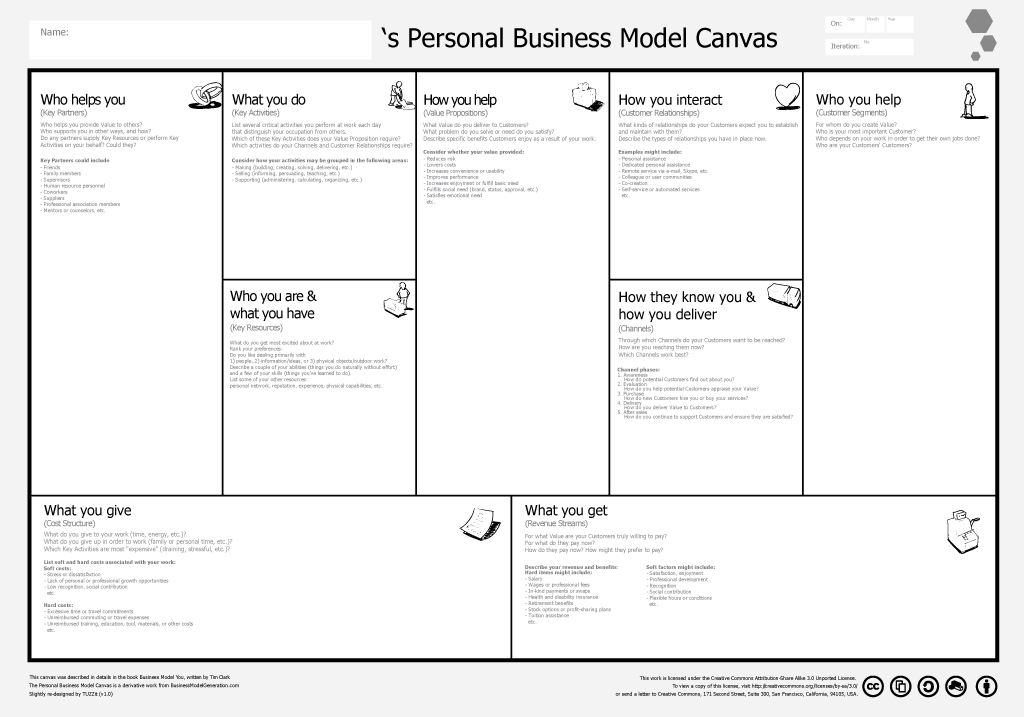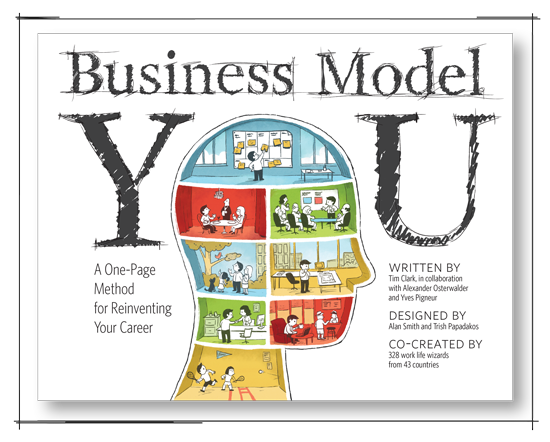Personal Business Model's Creator
Timothy CLARK
Dr. Clark is an entrepreneur, entrepreneurship trainer, teacher, and author who leads the global personal business model movement. He completed research in international business model portability and authored or edited five books...
Description of the Personal Business Model
Business Model You is a professional development tool and the name of the international best-seller written by Tim Clark, in collaboration with Alexander Osterwalder and Yves Pigneur. It is based on Alex and Yves’ original work on business model innovation. In essence, it helps people define their own business model, just as if they were themselves a business.
Users of the Personal Business Model Canvas can discover and summarize visually their own networks, skills, activities, resources, and value propositions on a great one page canvas. The main advantage of this tool, and of the overall Business Model You approach, is that it encourages people to develop a dynamic view of their career strategy and vision.
Instead of writing a typical descriptive resume, the canvas helps to understand how other people perceive their value. Moreover it can help people trying to give a new orientation to their career to identify opportunities.
When the Personal Business Model Canvas is used for the first time. The building blocks and their associated questions typically help people to (re)discover interesting facts they typically overlook about themselves. Later on, it can be used to expand on certain areas of interest or business ideas the individual may have.
Just for the original Business Model Canvas, people must realize that the canvas evolves in time through iterations. Your own business model is dynamic and changes according to your decisions and development strategy. It is also affected by your values, activities, assets, partners, etc.
Watch the video below to see Tim Clark present Business Model You himself before you can start defining the most important business model of all, your own!


